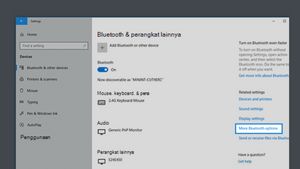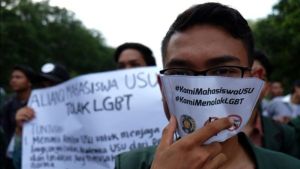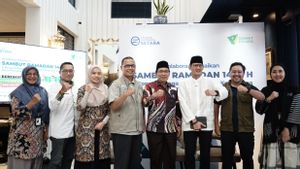JAKARTA - The recommendation algorithm that drives the online short video platform TikTok is once again in the spotlight. Especially after the United States ordered its Chinese-based owner, ByteDance, to sell TikTok assets in the US or face a national ban on operating in the country.
Algorithms are considered the core of ByteDance's overall operations, and ByteDance prefers to close apps rather than sell them.
China made changes to its export law in 2020 which grants approval rights to any export of the algorithm and source code, adding a layer of complexity to any attempt to sell the app.
Academics and former company staff say that it's not just an algorithm, but also how it works in a short video format, which has made TikTok so successful globally.
Prior to the emergence of TikTok, many believed that the technology connecting users' social connections was a secret spice for successful social media applications, given the popularity of Meta's Facebook and Instagram.
But TikTok points out that the algorithm, driven by an understanding of user interest, could be even stronger. Instead of building their algorithms based on "social graphs" as Meta does, TikTok executives including TikTok CEO Shou Zi Chew have said that their algorithm is based on "circular interest".
"Although competitors have similar interest-based algorithms, TikTok is able to improve the effectiveness of algorithms with short video formats," said Catalina Goanta, a professor at Utrecht University.
"Their recommendation system is very common. But what really distinguishes TikTok as an app is its design and content," he said.
Short video formats allow TikTok algorithms to become much more dynamic and even be able to track user preferences and interests changes over time, up to very detailed levels like what users might have liked over a certain period of time in a day.
In addition, the short video format allows TikTok to learn about user preferences more quickly, said Jason Fung, former head of the TikTok game unit.
"Because in short video format, you can collect data about user preferences much faster than YouTube, where the video average is probably less than 10 minutes," he said.
And TikTok's placement as an app built for mobile devices from scratch also gives it an advantage over competing platforms that have to customize their interfaces from computer screens.
The rapid entry of TikTok into the short video market also provides a big early advantage for the company. Instagram doesn't launch Reels until 2020 while YouTube launches Shorts in 2021, both lag behind TikTok in years of data and product development experience.
TikTok also regularly recommends content that is beyond user interest, whose company management has repeatedly said it is an important part of the experience of TikTok users.
Ari Lightman, a professor at Carnegie Mellon University, said another effective tactic used by TikTok is to encourage its users to form a group publicly through a fence.
By encouraging users to form public groups, TikTok can be more effective in studying the behavior, interests, suitability, and ideology of its users.
If TikTok is ultimately banned in the US, Lightman says that while US tech giants certainly have the ability to emulate TikTok with their own products, emulating the user culture possible by TikTok may be a bigger task.
TikTok's recommendation algorithm is also mostly taken from its Chinese brother app, Douyin, which was released in 2016. Although ByteDance often emphasizes that TikTok and Douyin are different apps, a source with direct knowledge of the matter says that both algorithms remain similar to date.
SEE ALSO:
In this case, China's advantage is the company's ability to take advantage of China's low labor costs which allow them to hire many content annotation creators to carefully tag all content and users on the platform.
"In around 2018 and 2019, Douyin is working to tag each user. So they will manually tag each video clip. Then they will tag the user based on the videos they watch," said Yikai Li, a manager at the Narativex advertising agency and former director at ByteDance. "Then they also applied this tactic to TikTok."
While using annotation makers to tag data is now common and important practice for AI companies, ByteDance is one of the earlys in adopting this strategy.
"Mirking these tags requires a lot of work. It really needs energy," he said, "So Chinese companies have the advantage here. They can hire more people. The cost is cheaper than companies in North America."
The English, Chinese, Japanese, Arabic, and French versions are automatically generated by the AI. So there may still be inaccuracies in translating, please always see Indonesian as our main language. (system supported by DigitalSiber.id)














